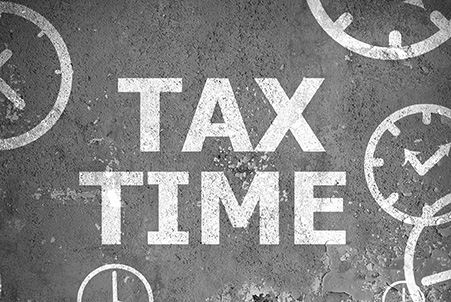
Tax Time Tips
02/09/24
Each year, as the April 15th deadline to either file your taxes or file for an extension(Opens in a new window) approaches, many people scramble to submit their tax returns. As you embark on your tax journey, ease the process by starting with our list of key tasks and things to remember.
Organize Your Documents
Gathering all of the required paperwork can seem like a daunting task, but the process is fairly smooth after you've gathered all of the documentation you need. Here’s a checklist for organizing your tax documentation. If any forms are electronic, printing them out can make it easier for viewing, organizing, and storage.
Income:
- Previous year’s tax return
- W-2 forms for each job held by you, your spouse, and all dependents
- All 1099s
- Trust and estate forms (1041)
- Forms from all other income
Deductions:
- Homeowner expenses (mortgage interest Form 1098, tax payment receipts, energy efficient upgrades and qualified moving expense receipts)
- Charitable contribution receipts
- Education expense receipts
- Self-employment expense receipts
- Childcare expense receipts
- Other receipts (alimony, health care, job-hunting, job-related, tax preparation)
- Tax payment receipts
- IRA (5498) and HSA contribution (5498-SA) receipts
Will You Be Self-Filing or Using a Tax Pro?
After you’ve gathered the needed documentation, your next decision is whether to file your taxes yourself (either with a redesigned Form 1040 or by using an online tax software) or to seek help from a professional tax preparer. There are many online software options for federal and state returns, each with different features, costs, and degrees of audit protection. Also, if your adjusted gross income was $79,000 or less in 2023, you may want to explore the free file software offers(Opens in a new window) from the IRS.
When deciding whether to file yourself or to use a tax pro, assess the complexity of your situation, your comfort level with tax procedures, time constraints, and budget considerations to make the most informed choice for you.
Protect Yourself
Regardless of your chosen method, safeguard yourself against scams and fraud by practicing secure computer habits, avoiding public Wi-Fi for tax-related activities, and staying vigilant against phishing attempts or phone scams. The IRS warns of an increase in scams designed to trick taxpayers(Opens in a new window), including phone scams where callers claiming to be IRS agents (with bogus names and identification numbers) insist that you owe taxes and must pay or risk jail time. Delete these messages. Do not give personal information to callers or respond to emails asking for account numbers or cash payments. The IRS does not use phone calls, text, or email to request personal or financial information.
These tax tips can make this time of year much less stressful, especially if you plan ahead in the future. Get organized, do what works for you, and above all – be safe and protect your financial information. And, as always, contact us if you have questions or need tax forms for your interest-bearing checking or savings accounts.
